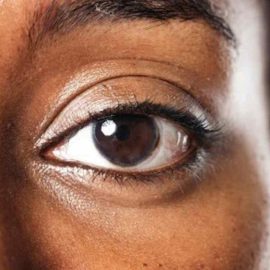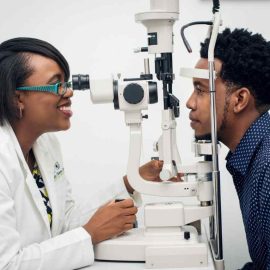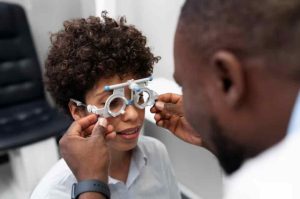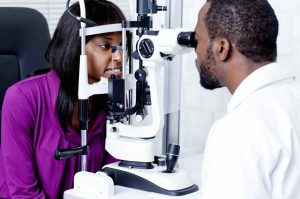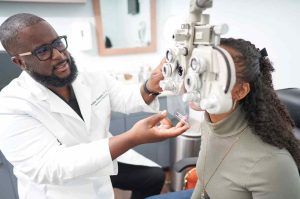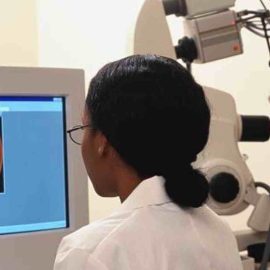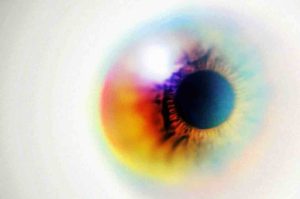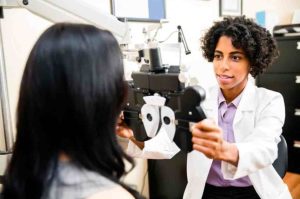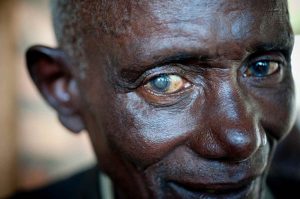How to Choose the Right Pediatric Eye Care Specialist in Nigeria
Children’s eyes are precious and need special care and attention. Children may have different eye problems than adults, such as refractive errors, strabismus, amblyopia, congenital cataracts, glaucoma, retinoblastoma, and retinopathy of prematurity. These conditions can affect the development of vision and learning and may lead to permanent visual impairment or blindness if not treated early and properly. Therefore, parents and caregivers need to choose the right pediatric eye care specialist for their children.
A pediatric eye care specialist is a doctor who has received additional training and certification in the diagnosis and treatment of eye diseases and disorders in children. A pediatric eye care specialist can provide comprehensive eye exams, prescribe glasses or contact lenses, perform eye surgery, and manage eye emergencies in children.
In Nigeria, there are different types of eye care professionals who can provide eye care services to children, such as ophthalmologists, optometrists, opticians, and ophthalmic nurses. However, not all of them are qualified or experienced in dealing with children’s eye problems. Therefore, parents and caregivers need to be aware of the differences and similarities among these eye care professionals, and how to find the best pediatric eye care specialist for their children.
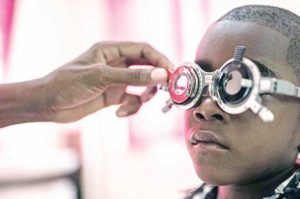
Differences and Similarities among Eye Care Professionals in Nigeria
According to the Nigerian Optometric Association, the following are the definitions and roles of the different eye care professionals in Nigeria:
Ophthalmologist: An ophthalmologist is a medical doctor who specializes in the medical and surgical care of the eyes and the prevention of eye disease. An ophthalmologist can diagnose and treat all eye diseases, perform eye surgery, and prescribe and fit glasses and contact lenses. An ophthalmologist must complete six years of medical school, one year of internship, and four years of residency training in ophthalmology. Some ophthalmologists may also pursue additional fellowship training in a subspecialty, such as pediatric ophthalmology, which focuses on the eye care of children.
Optometrist: An optometrist is a primary health care practitioner who specializes in the examination, diagnosis, treatment, and management of diseases and disorders of the visual system, the eye, and associated structures. An optometrist can provide comprehensive eye exams, prescribe glasses and contact lenses, treat some eye diseases, and refer patients to other specialists when needed. An optometrist must complete six years of university education, including four years of professional training in optometry. Some optometrists may also pursue additional postgraduate training or certification in a specialty, such as pediatric optometry, which focuses on the eye care of children.

Optician: An optician is a technician who specializes in the design, fitting, and dispensing of glasses and contact lenses. An optician can measure the eyes, adjust and repair glasses, and instruct patients on how to use and care for their glasses and contact lenses. An optician must complete a two-year diploma program in opticianry, and pass a national examination and a practical assessment. Some opticians may also pursue additional training or certification in a specialty, such as pediatric opticianry, which focuses on the eye care of children.
Ophthalmic Nurse: An ophthalmic nurse is a registered nurse who specializes in the care of patients with eye diseases and disorders. An ophthalmic nurse can assist ophthalmologists in performing eye exams, administering eye medications, providing preoperative and postoperative care, and educating patients and their families about eye health. An ophthalmic nurse must complete a three-year diploma program in nursing, and pass a national examination and a practical assessment. Some ophthalmic nurses may also pursue additional training or certification in a specialty, such as pediatric ophthalmic nursing, which focuses on the eye care of children.
As can be seen from the above definitions and roles, there are some differences and similarities among the different eye care professionals in Nigeria. The main differences are in the level and scope of education, training, and practice. The main similarities are in the goal and purpose of providing quality eye care to the public.

How to Find the Best Pediatric Eye Care Specialist for Your Child
Finding the best pediatric eye care specialist for your child can be a challenging task, especially in a country like Nigeria, where there is a shortage of eye care professionals and services, and where there is a lack of awareness and regulation of the eye care sector. However, there are some steps that parents and caregivers can take to make the process easier and more effective. Here are some tips on how to find the best pediatric eye care specialist for your child:
Start early: The best time to start looking for a pediatric eye care specialist for your child is before your child has any eye problems. According to the American Academy of Ophthalmology, children should have their first eye exam at six months of age, followed by another exam at three years of age, and then before they start school. These exams can help detect and treat any eye problems that may affect your child’s vision and learning. Therefore, it is advisable to find a pediatric eye care specialist who can provide these routine eye exams for your child, and who can also monitor your child’s eye health and development over time.
Ask for referrals: One of the best ways to find a pediatric eye care specialist for your child is to ask for referrals from your family doctor, your child’s pediatrician, your child’s school teacher, or your friends and relatives who have children with eye problems. These people may have personal experience or knowledge of a good pediatric eye care specialist who can provide quality eye care for your child. However, you should also do your research and verify the credentials and reputation of the pediatric eye care specialist before you make an appointment.
Check the qualifications: Another important step to finding a pediatric eye care specialist for your child is to check the qualifications of the eye care professional. You should make sure that the eye care professional has the appropriate education, training, certification, and license to practice in Nigeria. You should also make sure that the eye care professional has a subspecialty or a specialty in pediatric eye care, which means that they have received additional training and experience in dealing with children’s eye problems. You can check the qualifications of the eye care professional by asking them directly, by looking at their website or profile, or by contacting the relevant professional associations or regulatory bodies in Nigeria.

Consider the location and availability: Another factor to consider when finding a pediatric eye care specialist for your child is the location and availability of the eye care professional. You should look for a pediatric eye care specialist who is located near your home, your child’s school, or your workplace so that you can easily access their services and follow up with them. You should also look for a pediatric eye care specialist who is available at convenient times and days, and who can accommodate your child’s schedule and needs. You can check the location and availability of the eye care professional by calling their office, visiting their website or profile, or using online platforms such as Vezeeta, WhatClinic, or Zocdoc, which can help you find and book appointments with eye care professionals in Nigeria.
Visit the clinic and meet the staff: The final step to finding a pediatric eye care specialist for your child is to visit the clinic and meet the staff. You should visit the clinic before you make an appointment, or during your first appointment, to see the facilities, equipment, and hygiene of the clinic. You should also meet the staff, including the receptionist, the nurse, the optician, and the eye care professional, to see how they interact with you and your child. You should look for a clinic and a staff that are friendly, professional, respectful, and attentive, and that can make you and your child feel comfortable and confident.

Conclusion
Choosing the right pediatric eye care specialist for your child is a crucial decision that can affect your child’s vision and learning. Therefore, you should take your time and follow the steps outlined in this article to find the best pediatric eye care specialist for your child. You should start early, ask for referrals, check the qualifications, consider the location and availability, and visit the clinic and meet the staff. By doing so, you can ensure that your child receives the best eye care possible and that your child’s eyes are in good hands.


